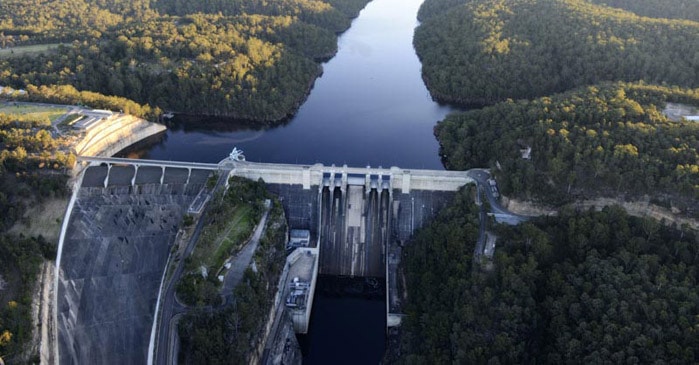WaterNSW has been monitoring levels at the Warragamba Dam, which is now at 100 per cent capacity, and is taking steps to maintain operational safety while ensuring security of supply for Greater Sydney.
All dams are either managed as water storage dams or flood mitigation dams.
For water storage dams, the purpose is to store the maximum amount of water to ensure the longest possible time of water supply.
Flood mitigation dams are the reverse where levels are kept low to provide the maximum amount of airspace for flood inflows and reduce impacts in downstream valleys.
Warragamba Dam is used explicitly as a supply dam, and serves no purpose in reducing flood risk in the Hawkesbury-Nepean Valley – a common misconception according to WaterNSW.
This means that WaterNSW only operates the dam at the required -0.3 to -1m of Full Supply Level (FSL) when full. Small releases are made at 100 per cent to maintain this level and avoid the main radial gates repeatedly opening and closing due to small increase in storage.
The operational procedure (H14 operational protocol) for Warragamba dam is the original operating protocol, and is designed to manage the inflows during a flood event to protect the community from any failure at the dam.
For WaterNSW to release any more water prior to a forecasted rain event (noting it would then not have that water stored in the event the rain didn’t come) would be a breach of the key operation objective of the dam being the provision of water security for Greater Sydney.
Preparing for a spill
While WaterNSW said there are no major rain events forecast for the near future, it is working closely with the BoM and the SES to prepare for any potential flooding risks in the coming months.
WaterNSW scientists are monitoring water quality as a result of ongoing inflows that peaked at a rate of 13,000 megalitres per day (ML/day) on Saturday 15 August 2020.
At present, WaterNSW said there are no issues associated with the quality of water being supplied to Sydney Water for treatment.
The major rainfall events that cause flooding in the Hawkesbury-Nepean Valley are prima East Coast Lows.
These systems are dynamic and prove difficult to forecast and track along the NSW coast. Reliable forecasts from BoM come only four days in advance of an event but have high uncertainty on the location of the heaviest rain and how much rain will occur in the catchment, or not.
A case for not making releases
WaterNSW said it can be more dangerous to release water in advance of a forecasted event, as the releases will increase downstream river heights and inflows from downstream tributaries may result in quicker flooding in the Hawkesbury-Nepean Valley, reducing the evacuation times for communities.
The New South Wales State Emergency Service takes the lead in managing flood impacts and works closely with WaterNSW and the BoM during flood events.
Similar conditions were present in 2016, with Warragamba Dam full for a period of four to five months without a major flood event occurring. Conditions after this period turned extremely dry with Warragamba Dam dropping to low levels by early 2020.
If releases were made in 2016 to create airspace, the storage would have been at even lower levels by early 2020, negatively impacting critical water supply for Greater Sydney.
A flood resilience plan for the Hawkesbury-Nepean Valley
The Warragamba Dam Raising project will provide flood mitigation to reduce the risk to life and property in the Hawkesbury-Nepean Valley.
This is achieved through raising the level of the spillway crests above the existing full supply level to temporarily hold back inflows. The planned extra space in the dam will be solely for flood mitigation and not for increased supply.
While a range of other infrastructure and non-infrastructure outcomes are included in the New South Wales Government’s Hawkesbury-Nepean Valley Flood Risk Management Strategy and must be part of the solution for managing ongoing risk, no other mitigation measures were found to achieve the same risk reduction as the proposed Warragamba Dam Raising project.
WaterNSW, as owner and operator of the dam, has been tasked with leading the environmental assessment and detailed concept design for the project.
WaterNSW is consulting widely about the effects and benefits of the proposal. During its public exhibition, the proposal will be assessed on its merits and all interested stakeholders will provide further comment.
The final decision on the dam raising proposal will only be made after all environmental, cultural, financial and planning assessments are complete.














